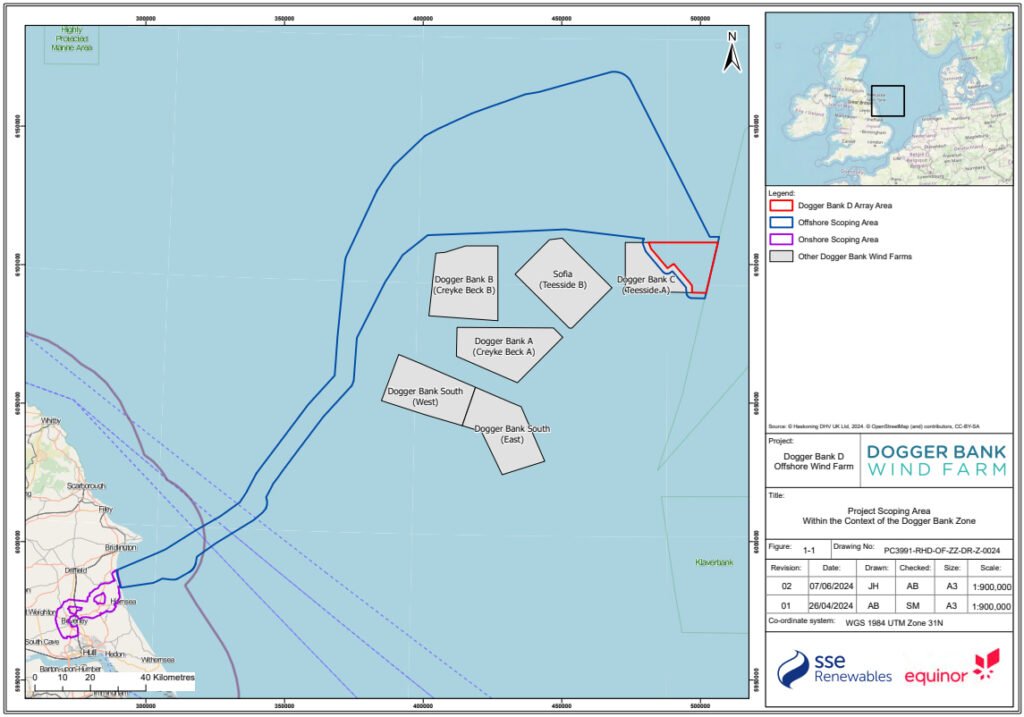SSE and Equinor, co-owners of the Dogger Bank D offshore wind project, have submitted a Scoping Report for the 2 GW project to the UK’s Planning Inspectorate. This report is in preparation for an Environmental Impact Assessment (EIA) needed to submit a Development Consent Order (DCO) application.
Dogger Bank D is the proposed fourth phase of the world’s largest offshore wind farm under construction, which SSE and Equinor are developing off Yorkshire with Vårgrønn. If approved, it would add up to 2 GW to the existing 3.6 GW Dogger Bank Wind Farm, whose third phase began construction this year.
“The Scoping Report is an important milestone for Dogger Bank D and a key part of the offshore wind farm’s development,” said Rob Cussons, Project Director for Dogger Bank D at SSE Renewables.
“The report outlines project proposals and key environmental factors. We look forward to the Scoping Opinion from the Planning Inspectorate and input from consultees to inform our proposals.”
A further round of public consultation on Dogger Bank D will occur in Autumn 2024, according to SSE Renewables.
The EIA Scoping Report follows the National Grid ESO’s Transitional Centralised Strategic Network Plan (tCSNP2), confirming Dogger Bank D will connect to Birkhill Wood, a new 400kV substation in East Riding of Yorkshire.
Following this confirmation, SSE and Equinor dropped plans to integrate green hydrogen production into Dogger Bank D, focusing solely on power generation.
If approved, Dogger Bank D would be built 210 kilometers off the UK’s northeast coast, in the eastern zone of the Dogger Bank C lease area.
The fourth phase has been designated a Nationally Significant Infrastructure Project (NSIP) and must apply for a DCO through the NSIP Planning Process. SSE and Equinor are also working with The Crown Estate on the project’s progression.
If approved, Dogger Bank D is expected to enter construction in 2029, with completion anticipated no later than 2035.
The 2 GW offshore wind farm plans to include up to 122 wind turbines, with each turbine expected to have a rated capacity between 14 MW and 27+ MW, based on the models available when construction begins, according to the Scoping Report.
The final turbine selection will be made after further surveys, technical development, and supply chain engagement, with the decision finalized post-consent.
Original Story at www.offshorewind.biz
